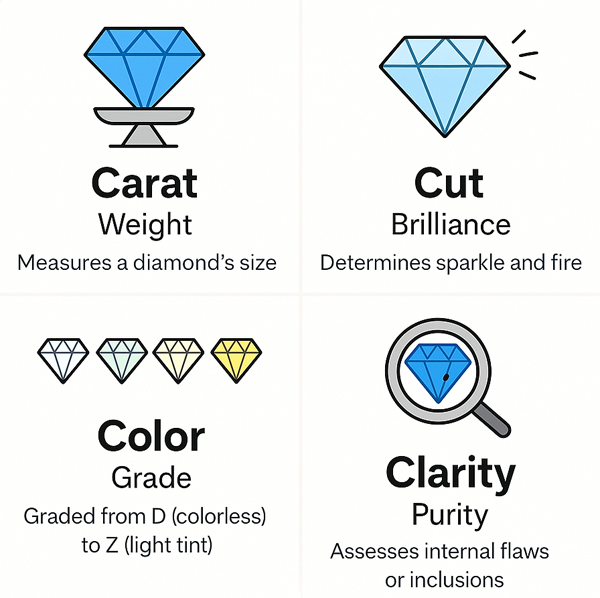DIAMOND GUIDE: THE 4 CS – UNDERSTANDING DIAMONDS BETTER
When evaluating a diamond, the most widely accepted system for assessing its quality is known as the 4Cs — an abbreviation for Carat, Cut, Color, and Clarity. This system was developed by the Gemological Institute of America (GIA) and has become the global standard for grading diamonds.
Each of the 4Cs plays a unique role in determining a diamond’s appearance, rarity, and value. Together, they provide a structured way to compare diamonds and make an informed selection based on personal preferences and budget.
However, while the 4Cs provide an essential foundation, they do not tell the whole story. Two diamonds with identical grades can differ noticeably in how they look in real life. This is especially true for aspects like brilliance and fire, which depend on more than what’s written in a lab report.
This section of the guide will walk you through each C — what it means, how it’s measured, and how it impacts both the beauty and price of a diamond.

CARAT
When choosing a diamond or gemstone, one of the first terms you’ll encounter is carat weight. While it’s commonly associated with size, carat weight actually refers to the mass of the stone—one carat equals 0.20 grams. It plays a significant role in determining both the appearance and the value of a gem.
Discover more about carat size and how it influences the look and presence of a diamond.
COLOR
Discover more about diamond color grades.
CLARITY
Discover how clarity shapes a diamond’s beauty.
CUT
Discover more about diamond cuts.
Key Pages: Create & Customize Jewelry
Key Pages: Diamond Jewley From the Atelier
Essential Diamond & Jewelry Education
Important Links: Support & Policies
MyAntwerpDiamonds.com /
Some email responses from us may be filtered as spam or blocked altogether. To ensure you receive our emails, please provide your telephone or WhatsApp number for verification.



